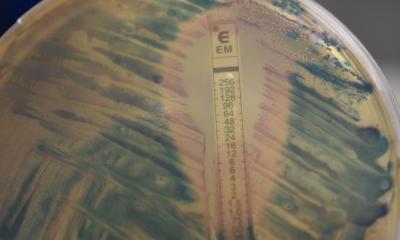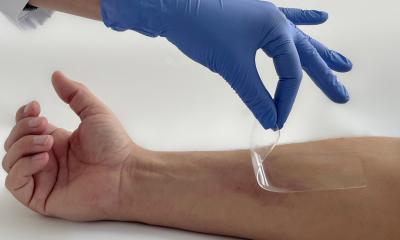News • 'Mito-riboscins'
Scientists stumble across new method of making antibiotics

And they have created and validated several new antibiotics already - many of which are as potent, or more so, than standard antibiotics, such as amoxicillin. "A little like Alexander Fleming, we weren't even looking for antibiotics rather researching into new compounds that might be effective against cancer stem cells," explains Michael P. Lisanti, Chair of Translational Medicine at the University's Biomedical Research Centre. "I think we've accidentally invented a systemic way of creating new antibiotics which is simple, cheap and could be very significant in the fight against superbugs," added Dr Federica Sotgia, a co-author on the study.
The Salford group specialise in cancer stem cells and specifically methods of inhibiting energy production in mitochondria, the "powerhouse" of cells which fuels the growth of fatal tumours. One of the team's work streams is how antibiotics can be effective against these mitochondria, so while searching a library of compounds for potential 'ammunition', they switched the focus and started hunting for compounds that were effective against mitochondria and could be tested as antibiotics. "Mitochondria and bacteria have a lot in common," stresses Lisanti. "We began thinking that if what we found inhibited mitochondria, it would also kill bacteria. So, these new anti-cancer agents should also be potential antibiotics.
The team sorted through 45,000 compounds, using a three-dimensional structure of the mitochondrial ribosome - first identified by Venki Ramakrishnan, a Nobel-prize winner (Cambridge, UK) and President of The Royal Society. They identified 800 small molecules which might inhibit mitochondria based on their structural characteristics and then whittled this down to the most promising 10 compounds, which they discovered using traditional phenotypic drug screening.
This was under our nose
Michael P. Lisanti
Their results showed that these synthetic compounds - without any additional chemical engineering - inhibited a broad spectrum of 5 types of common bacteria, including Streptococcus, Pseudomonas, E. coli and methicillin-resistant Staphylococcus aureus (MRSA). They also killed the pathogenic yeast, Candida albicans. These new antibiotics are called 'Mito-riboscins' because they were found by targeting the mitochondrial ribosome in human cancer cells.
'Mito-riboscins' are equally if not more potent than standard antibiotics. "We have accidently invented a new strategy for identifying and designing new antibiotics to target drug resistant bacteria," added Professor Lisanti. "This was under our nose. The bottleneck with antibiotic discovery has been that there was no obvious systematic starting point. We may now have one. These broad-spectrum antibiotics were discovered, by simply screening candidates first on mitochondria in cancer cells."
Source: University of Salford
17.07.2017











